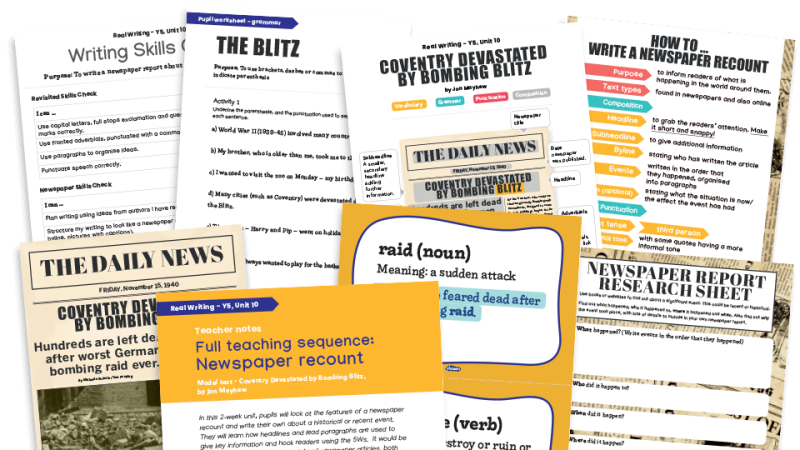Teach Your Students That Shakespeare Wrote For The Stage, Not For The Page

Take Shakespeare off the page and into the spaces for which he was originally writing and see what happens to students' understanding, suggests Helen Mears…

- by Helen Mears

Are you looking for a new angle to use in teaching Shakespeare? A different way to engage your English students with his work? Have you ever considered spending some time in your scheme of work studying the mechanics of Early Modern Theatre, and how the plays originally functioned as theatrical texts? Perhaps you should.
As Brander Matthews, one of the first teachers to focus on Theatre Studies as a subject, once insisted, ‘A proper understanding of Shakespeare requires a knowledge of what sort of physical theatre he had in mind when he was creating his drama’.
This is an understanding beyond the basic ‘open air, yard and galleries, Heaven, Earth and Hell, Juliet’s balcony’ approach. Ben Jonson himself described The Globe as the ‘Glory of the Banke’. The theatre was central to Shakespeare’s writing between 1599 and 1613 when many of his greatest plays were produced. It must have left its mark.
One key feature of Early Modern staging that had a significant impact on Shakespeare’s language is the fact that there was no scenery beyond some basic stage hangings; black for a tragedy, painted for a comedy or history. This means that writers had to use language to create a sense of setting. Plays were an aural rather than a visual event; anyone planning a trip to The Globe would have spoken of hearing, rather than seeing a play.
The famous opening chorus to Henry V (very probably one of the first works to be played in the spectacular new theatre) pleads with the audience to “Let us… On your imaginary forces work”. Shakespeare was a master at economically conjuring up time and place in his writing. Look at the opening of Hamlet, for example. In around 24 terse lines, full of rushed, shared lines of blank verse, the author gives us all that we need to pick up the mood of the scene and the play itself.
The same technique is present in the similarly sparse opening to Macbeth, and in the tense exchange shared between Macbeth and Lady Macbeth in the aftermath of Duncan’s murder. You will find examples whichever text you are studying; it is an inherent feature of Shakespeare’s craft.
Rank and file
In the absence of scenery, the theatre and the stage had symbolic meaning to audiences. As well as the oft-quoted belief that the canopy above the stage represented the heavens (with the stage as the Earth, and the space below the stage accessed via a trapdoor being Hell), the levels of the stage could also represent the differing social standings of characters in the play.
One of the best examples of this can be found in Act 3, Scene 3 of Richard II, when Richard is asked to descend from the balcony to speak to Bolingbroke, his rival to the throne, in the ‘base court’. This marks both a literal and symbolic descent for the King, moving from his lofty position to mingle with the commoners. It is also important to remember the added symbolic importance that royal items such as crowns and thrones would have to the audience.
Search the play you are studying with your class for any other examples of this social movement or use of highly symbolic props. The playhouses were the only place that people of such a wide range of social standings gathered together in this period. This was seen as dangerous, and was the source of many of the Puritan and government objections to theatre.
Clothing was similarly symbolic. Who could wear what was governed by sumptuary laws. The higher ranks could wear fine fabrics and colours, while the lower classes were confined to simple woollen garments in muted colours. The players were openly flaunting these laws – in fact, the phrase ‘dressing up’ refers to this practice, in the actors were literally ‘dressing up’ the social ranks.
Any reference to clothing in Shakespeare is relevant in building character. Think how the simple mention of his ‘inky cloak’ tells us so much about Hamlet, or how the gradual dishabillement of Ophelia and Lear reflects the disintegration of their characters.
As at the reconstructed Globe theatre, it is important to remember that performances took place in the open air during daylight hours. This had a profound effect on the relationship between player and spectator, which was lost when theatre moved indoors into darkness. The relationship was compounded by the polygonal shape of The Globe. Study of theatre plans and archaeological sites has suggested that no audience member was more than 50 feet from an actor who was standing centre stage. They were also fully visible to each other. This created an incredibly intimate connection between actor and audience.
Shakespeare’s acute awareness of this connection manifests itself in many ways. Think of Act 2, Scene 3 of Julius Caesar, in which first Brutus and then Mark Anthony address the Roman crowds. The massed ranks of groundlings standing in the yard become stand-ins for the citizens of Rome. Brutus addresses them in plain speaking prose, and then Mark Anthony sways them with high blank verse.
Changing codes
This intimacy is also expressed through the growing use of soliloquy in Shakespeare’s plays. All of the great tragedies were written for performance at The Globe, and these feature his best-known soliloquies. Hamlet, Macbeth and Iago all address the audience directly on multiple occasions. We share in their thought processes, their decisions and their mistakes.
Where Marlowe illustrated Faustus’ inward dilemma through the medieval tradition of good and bad angels, Shakespeare’s heroes and villains express their psychomachia to the audience. Why do we sympathise with Macbeth despite the awful deeds he commits? Because he lets us inside his head to see his weaknesses and his fears.
Shakespeare uses another technique to build intimacy with the audience, particularly with the lower classes gathered into the yard (the lack of Health and Safety rules meaning that upwards of a thousand people could be packed into the space); several of his main characters are expert ‘code switchers’, able to switch between verse and prose with ease depending on who they are talking to.
Iago is good at this, but the kings (or princes) of the art are Prince Hal and Hamlet. The ears of Early Modern playgoers would have been finely tuned to these switches in rhythm, so they would have noticed that these two characters can deliver eloquent speeches in blank verse, as well as joke and banter in earthy prose. They can converse with ease across a range of social groupings.
What is the importance of this to the characterisation of these two young princes? What effect would it have on the audience? Is there a character in your text who is an adept code switcher?
Another useful element of this increased knowledge of Early Modern Theatre is to discover the very theatricality of the plays. Shakespeare was unique in being an actor, writer and shareholder in a playhouse. This tripartite role gave him an intuitive understanding of stagecraft – which is one in the eye for anyone who believes a random nobleman wrote the plays!
A simple example is to look at Macbeth and think about why the Porter scene exists. It is not simply a bit of (rather outdated) comic relief; it is there for a practical purpose. Look at the scenes around it to decide why, then search other texts for similarly practical scenes. This will help you and your students to understand Shakespeare’s works as plays – and particularly fine ones at that.
Places to play
The Globe wasn’t the only Early Modern London theatre. Others worth bringing to learners’ attention include…
The Theatre, Shoreditch London’s first custom-built amphitheatre and the first home of Shakespeare’s acting company
The Curtain, Shoreditch Owned by Philip Henslowe. Recent excavations have revealed this was a rectangular theatre built into an existing structure.
The Rose Playhouse, Bankside Henslowe’s polygonal theatre on Bankside, rival to The Globe.
The Fortune, Cripplegate Another Henslowe project – a grand, square theatre.
The Blackfriars Shakespeare’s acting company’s third home, an indoor, candlelit theatre that enabled them to perform in winter; the first step in theatre’s move indoors.
Helen Mears is an English, media and film teacher, a member of the British Shakespeare Association’s Education Committee and a volunteer at Shakespeare’s Globe.
Browse our Shakespeare Week resources.











